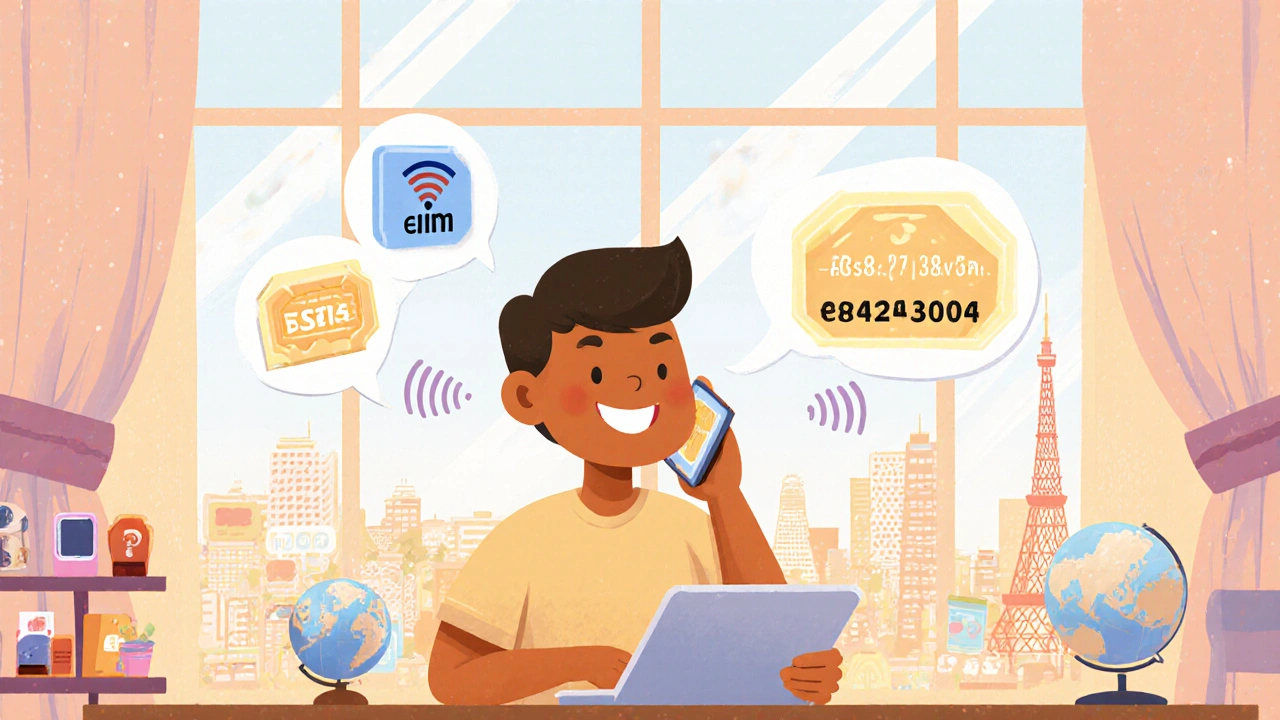eSIM for International Calls: Save Money and Stay Connected Abroad
When you travel internationally, your phone bill can spike overnight—not because you made lots of calls, but because your carrier charges you for eSIM for international calls, a digital SIM that lets you switch mobile networks without swapping physical cards. This technology is now the smartest way to avoid roaming fees and connect reliably abroad using VoIP. Unlike old-school SIM cards, an eSIM lets you activate a local or global data plan from your phone’s settings, often in under a minute. You don’t need to hunt for a store, wait in line, or risk losing a tiny plastic chip. Just download a plan from a provider like Airalo, Holafly, or local carriers, and your phone connects using local networks—no extra hardware needed.
But here’s the catch: an eSIM alone doesn’t make cheap calls. It gives you data. To make actual phone calls, you need to pair it with a VoIP app like WhatsApp, Signal, Skype, or a business-grade SIP service. That’s where the real savings kick in. With a stable Wi-Fi or mobile data connection from your eSIM, you can call anywhere in the world for free or pennies per minute. Think of it like this: your eSIM is the highway, and VoIP is the car driving on it. You need both to get where you’re going without paying tolls.
Some travelers think they can just turn on Wi-Fi calling with their home carrier. But that often still uses your home plan’s roaming rates, especially if you’re outside your carrier’s partner network. An eSIM gives you direct access to local networks, which means better signal, lower latency, and fewer dropped calls. Plus, if you’re a remote worker or run a small business, you can use your eSIM with a SIP client on your laptop or phone to make professional calls from anywhere—without needing a local landline or expensive international plan.
You’ll also want to consider how your eSIM interacts with VoIP security, the practices that protect your calls from eavesdropping, toll fraud, and unauthorized access. If you’re using public Wi-Fi, always pair your VoIP app with a trusted VPN. Some eSIM providers even bundle encrypted calling features, but most don’t. That’s why checking your VoIP provider’s encryption standards matters just as much as choosing the right data plan.
And while eSIMs are great for travelers, they’re not magic. They don’t work everywhere—some countries still block or restrict them. Also, not all phones support dual eSIMs or eSIM + physical SIM. Make sure your device is compatible before you fly. And if you’re calling home often, look for VoIP providers that offer low-cost landline or mobile numbers in your home country. That way, people calling you pay local rates, and you save even more.
What you’ll find below are real, tested ways people are using eSIMs with VoIP to cut their international calling costs by 80% or more. From setup guides for remote teams to comparisons of the best eSIM providers for frequent travelers, these posts cut through the noise. No fluff. No hype. Just what works.
